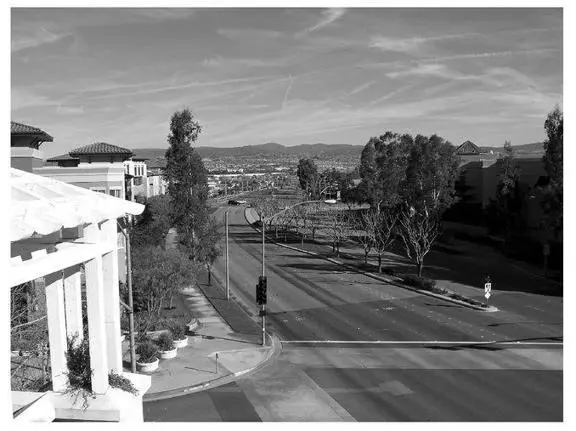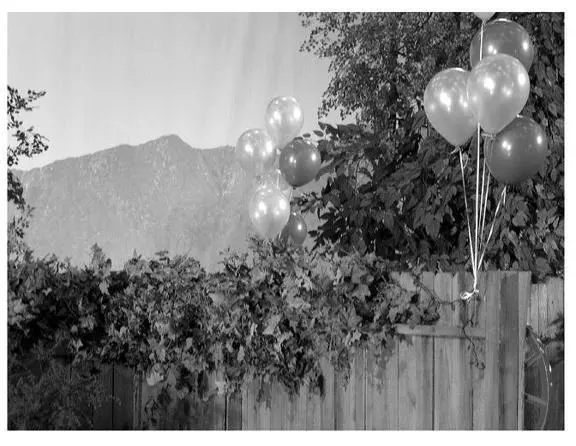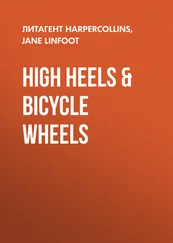A man driving me to Eastman House says that housing projects built in the 1960s now dominate part of the riverfront, that they were built there because it was not prime real estate at that time. Soon the projects became run down, and now developers are hoping to oust the remaining folks who live there, as the riverfront is gradually becoming cool, desirable, and lucrative.
This area is home not only to Kodak, but also to Xerox, Bausch & Lomb, and, in a nearby small town . . . Jell-O. All of these industries seem to me to be evocative of the last century. Kodak has made some serious layoffs lately, and, curiously, they seem optimistic about their future, as who really believes that film will remain a large industry for long? And who uses a Xerox machine anymore? There’s always room for Jell-O though.
Biking around one can see that the city is beautifully situated—but the past is holding on for dear life with a viselike grip, a grip that strangles too many of these towns. Not that old buildings and neighborhoods should be torn down, just the opposite, but they probably need to have new functions.
“He Got What He Wanted but Lost What He Had”
I arrive in Valencia, a “town” near L.A., in the early evening. I wash up and walk around outside to get my bearings. I seem to be nowhere or maybe on a movie set—there isn’t a soul on the sidewalks and the buildings nearby are all relatively new condos in fake this or that style. Across the street are indoor-outdoor malls that architecturally imitate streets, but their “streets” have no people on them.
A bronze statue of a couple carrying bags—a mother and daughter, caught in mid-shopping spree—is anchored to the sidewalk. A monument to shopping, or a memorial? I walk on and feel a chill—I am more scared here than in a bad New York neighborhood. It’s as if a neutron bomb exploded here just before I arrived, or as if there was once a bustling civilization here that has just abandoned the place. Am I about to find out why they left so quickly? Everywhere there is lush vegetation fed by hidden sprinklers, and everything is clean. It seems to be a physical manifestation of the Little Richard quote “He got what he wanted but lost what he had.” This place is obviously a dream come true—visually at least. It seems to be everything we say we want—but sometimes when we get what we want it turns out to be a nightmare.

In the morning I am driven to the combined offices and set of the HBO series Big Love, and I get a short tour of the interior sets of this TV show—sets that represent the homes of the show’s three Mormon wives. I love these artificial places. You’re on the set and it’s completely believable as a suburban home—there are books and magazines lying around that the characters would plausibly read, and here are some of their clothes they’ve apparently tossed aside. And then you look up and there is no ceiling above you and huge air-conditioning ducts loom overhead. Outside the “window” is a massive photo backdrop of the mountains that ring suburban Salt Lake City, where the show is set.

These jarring juxtapositions are beautiful—in some ways they make our own homes, offices, and bars seem just as hollow and superficial as the sets. What we call home is just a set too. We think of the familiar intimate details in our own spaces—those magazines and books, the tossed-aside articles of clothing—as unique, integral to our lives. In a sense, though, all they are is set dressing for our own narratives. We think of our personal spaces as “real,” and we feel they are filled with the stuff of our lives that’s different than everyone else’s. But especially out here, in Valencia, the “real” built landscape, those places I walk around, are made of structures that are no more real than this movie set. The mental dislocation is a wonderful feeling. The disconnect is somehow thrilling.
My Hometown
We travel great distances to gawk at the ruins of once-great civilizations, but where are the contemporary ruins? Where in our world are the ruins in progress? Where are the once-great cities that are now gradually being abandoned and are slowly crumbling, leaving hints of what people from the future will dig up and find a thousand years from now?
I am on a train passing through Baltimore, where I grew up. I can see vacant lots, charred remains of burned buildings surrounded by rubbish, billboards advertising churches, and other billboards for DNA testing of children’s paternity. Johns Hop-kins Hospital looms out of the squalor. The hospital is on an isolated island situated slightly east of downtown. The downtown area is separated from the hospital complex by a sea of run-down homes, a freeway, and a massive prison complex. Eastern Europe and the Soviet bloc come to mind. Failed industry and failed housing schemes and forced relocation disguised as urban renewal.
I hear the faint cacophony of many distant cell-phone rings in the train car—snippets of Mozart and hip-hop, old-school ring tones, and pop-song fragments—all emanating out of miniscule phone speakers. All tinkling away here and there. All incredibly poor reproductions of other music. These ring tones are “signs” for “real” music. This is music not meant to be actually listened to as music, but to remind you of and refer to other, real, music. These are audio road signs that proclaim “I am a Mozart person” or, more often, “I can’t even be bothered to select a ring tone.” A modern symphony of music that is not music but asks that you remember music.
Two men in the woods by the side of the train tracks are crouching by a small fire on a piece of overgrown, unused land. They share a forty ounce. Urban camping, of a sort. Behind them, beyond the thinning fall foliage, one can see a busy street. Here they are. Huck Finn and Jim. Hidden in plain sight. A parallel invisible world.
Baltimore, I read this weekend, has five times the homicide rate of New York City. Five times! No wonder the HBO show The Wire took place in Baltimore. They adopted the name Charm City the week that the garbagemen went on strike.
Much of nearby Washington, DC, is like this too, although there are isolated swaths of wealthy enclaves there. Baltimore lost its steel industry, its shipbuilding, its port industry and associated shipping, and much of its aerospace industry (which was located in the suburbs anyway). I’m not nostalgic for steel mills and coal mines, not even for GM plants, where they refuse—still!—to make anything but gas guzzlers, as they have for decades. Hell, fuck ’em—they’ve got it coming (as I revise this in April 2009 they are looking for a government bailout). They deserve to go down for such greedy, shortsighted behavior. Sad thing is, it’s the little guy who will lose his job because of the big guys’ stupidity. The big guys will get rewarded with another high-paying job. Those GM bosses should all get replaced by new folks, maybe by Japanese or Koreans, who at least know to make economical, fuel-efficient cars.
We encounter this kind of decay and devastation in Eastern Europe and in the former Soviet republics, but we’ve been taught to expect to see it there. We in the West have been told that those societies were under the boot of an evil, inefficient empire—where the will and gumption of the people was squashed—and that such desolation is the result. But would the will of the people, if they had been able to express it in that land, have arrived at something different? Haven’t we, in our presumed democracy, arrived at the same end?
Читать дальше











